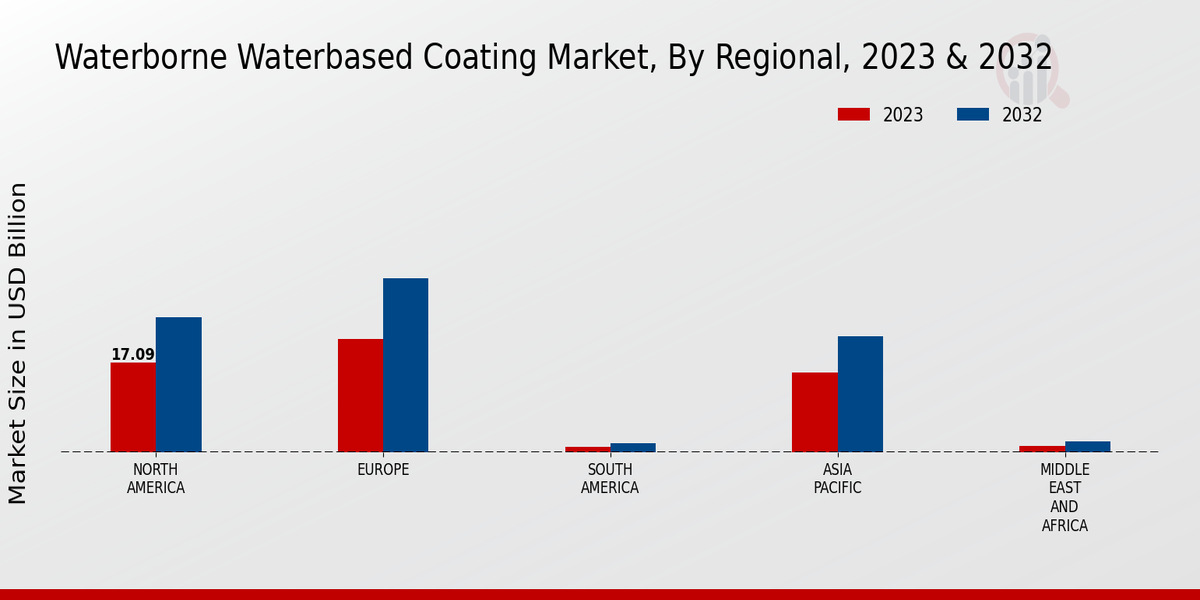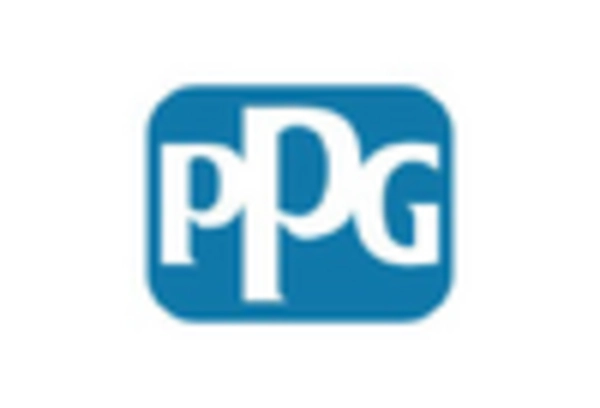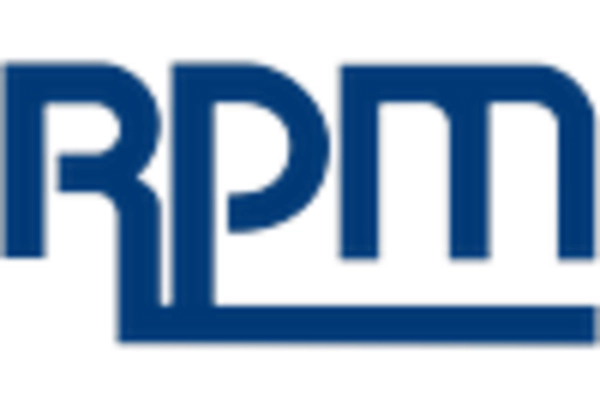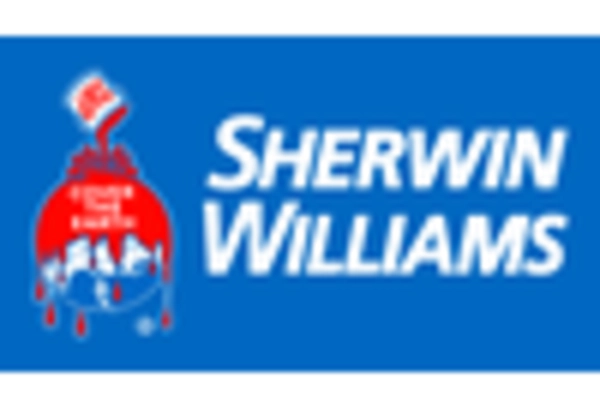Growth of the Automotive Industry
The Waterborne Water-based Coating Market is closely linked to the growth of the automotive industry. As vehicle manufacturers increasingly adopt waterborne coatings for their environmental benefits and performance attributes, the demand for these coatings is expected to rise. Waterborne coatings are favored for their ability to provide a high-quality finish while minimizing environmental impact. Recent data indicates that the automotive sector is projected to grow at a CAGR of 4.5%, which will likely drive the demand for waterborne coatings used in vehicle manufacturing and refinishing. This correlation between the automotive industry's growth and the waterborne coatings market underscores the potential for expansion in this sector.
Rising Demand in the Construction Sector
The Waterborne Water-based Coating Market is significantly influenced by the rising demand in the construction sector. With urbanization and infrastructure development on the rise, there is an increasing need for protective and decorative coatings in residential and commercial buildings. Waterborne coatings are favored for their low odor, quick drying times, and ease of application, making them ideal for construction projects. According to recent estimates, the construction industry is expected to grow by 4% annually, which will likely bolster the demand for water-based coatings. This trend indicates a robust market potential for manufacturers who can cater to the evolving needs of the construction sector.
Consumer Preference for Eco-Friendly Products
The Waterborne Water-based Coating Market is witnessing a shift in consumer preferences towards eco-friendly products. As awareness of environmental issues grows, consumers are increasingly seeking coatings that are non-toxic and sustainable. Waterborne coatings, which typically contain fewer harmful chemicals compared to solvent-based alternatives, are becoming the preferred choice for both residential and commercial applications. This trend is supported by market data indicating that the eco-friendly paint segment is expected to capture a larger share of the overall coatings market, potentially reaching 30% by 2027. The rising consumer demand for sustainable options is likely to propel the growth of the waterborne coatings market.
Regulatory Compliance and Environmental Standards
The Waterborne Water-based Coating Market is experiencing a surge in demand due to stringent regulatory compliance and environmental standards. Governments across various regions are implementing regulations aimed at reducing volatile organic compounds (VOCs) and promoting eco-friendly products. This regulatory landscape encourages manufacturers to innovate and develop waterborne coatings that meet these standards. As a result, the market is projected to grow at a compound annual growth rate (CAGR) of approximately 5.5% over the next few years. The increasing emphasis on sustainability and environmental protection is likely to drive the adoption of water-based coatings, as they are perceived as safer alternatives to traditional solvent-based products.
Technological Innovations in Coating Formulations
The Waterborne Water-based Coating Market is benefiting from technological innovations in coating formulations. Advances in polymer chemistry and formulation technologies are enabling the development of high-performance waterborne coatings that offer superior durability, adhesion, and resistance to environmental factors. These innovations are crucial as they allow manufacturers to create products that meet the diverse needs of various industries, including automotive, aerospace, and furniture. The market is projected to see a notable increase in the introduction of advanced waterborne coatings, which could enhance performance characteristics and expand application areas. This trend suggests a promising future for the waterborne coatings market as technology continues to evolve.


















Leave a Comment